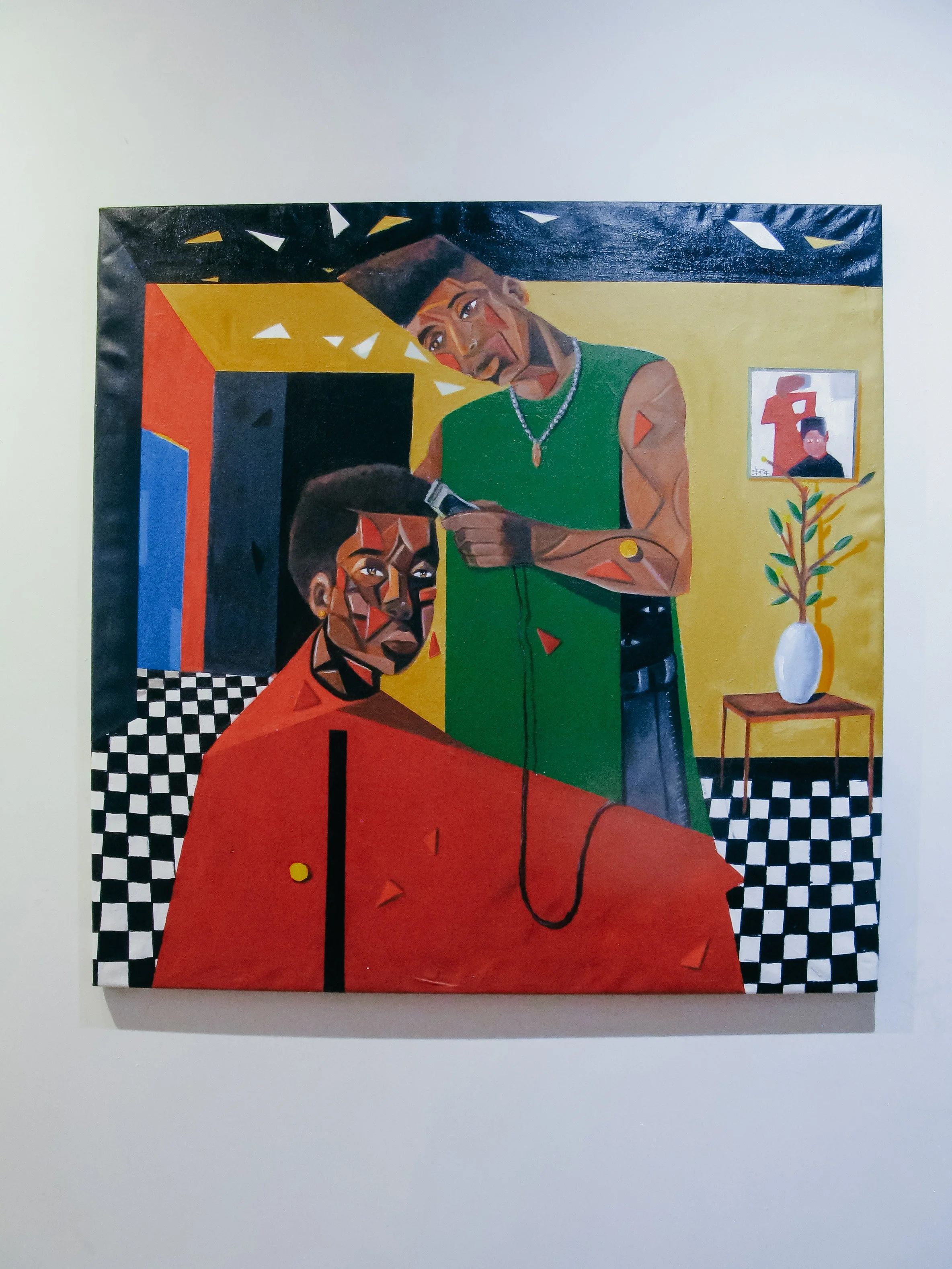Threads of Haiti: Yvena Despagne’s Curatorial Vision
For the last six years, Yvena Despagne, a Haitian-American curator, artist, and cultural practitioner, has engaged in community art practices to establish a vision and standard for contemporary Haitian art within the diaspora. Through radical acts of exhibition curation and alternative spaces that focus on heritage, roots, and mental well-being, Despagne’s work illustrates the communal networks that develop within Black diasporic communities, originating from the complexities associated with marginalized groups. This process broadens the concept of home to encompass the wider community, providing spaces for Black children to participate in traditions and engage in multicultural diasporic community formations.
Part of Despagne’s artistic journey encompassed a two-part exhibition titled Boys Don’t Cry (2023) at the Triangle Loft and Boys Don’t Cry: Growing Pains (2025) at Heath Gallery. Both exhibitions focused on the enduring stigma regarding men's expression of emotions, to include the importance of community networks that influence children as they grow and mature. With 11 artists, Despagne guides us into a contemplative realm encompassing notions of home and diasporic materiality through site-specific installations that symbolize culture and offer a reexamination of community portraiture. Placing Haiti at the center, Despagne contrasts artists from the Haitian diaspora and the African-American community to highlight similarities and foster a dialogue within the Black diaspora, enriched with personal archives, quotidian life, and traditions that represent both tangible and imagined spaces. Three specific works from Naderson Saint-Pierre, Prinston Nnanna, and Despagne and Richard Rameau, who collaborated on the site-specific installation TV Dad, highlight this diasporic materiality and sense of place.
A key highlight of this exhibition series is Saint-Pierre’s colorful painting titled The Barbershop. The vibrant yellow, green, and red colors that the artist employs depicts a scene central to the livelihood of Black and brown children and men, functioning as a safe space and a pillar within Black diasporic communities, illuminate the concept of “third” spaces (these spaces can be described as an alternative space for community, culture, and dialogue outside traditional institutions) that are intricately woven into the fabric of Black diasporic intimacies.
The subtle application of black, green, and red throughout the painting reflects an ancestral call to Pan-Africanism, with Saint-Pierre’s use of color and cubism, historically associated with modern European art. This artwork depicts a scene of a barber and their client, symbolizing the wisdom passed down to generations of clients who have sat in that chair. The sharp angles of the haircut, the meticulous sculpting with clippers, the eyes painted beneath the barber's shirt, and the contemplative expressions on both figures depict stories and histories of Black diasporic peoples in their curated spaces linked to grooming and style.
At the entrance of this exhibition, on a shelf, stands Nnanna's work. It features a carved Black ballerina inside an empty Spam can, symbolizing a cross-diasporic intimacy centered around food. Spam is a staple food within the Asian-American diasporas but also extends to Black diasporic communities. This culinary item acts as a connection between the artworks exhibited and provides insight into diasporic relationships that evoke nostalgia and solace.
Spam is a widely recognized food within the Caribbean community, often regarded as a comfort food. Though frequently linked to economic hardships, it also presents a convenience for many Black families to provide an essential meal for their children. This Spam can not only evoke memories of a bygone era through Black diasporic foodways but also reflects the experiences of children who came to recognize Spam as a convenient and straightforward means of sustenance. The repurposing of this food item is central to connecting different cultures and cross-diasporic practices associated through cuisine, serving as a means to highlight similarities and promote solidarity among Black diasporic communities. Both the Spam sculpture and the barbershop portrait offer contemplative spaces that reflect on the material reality of contemporary Black diasporic art and its role as a narrative tool and educator of solidarity within similar communities.
Through Despagne’s curatorial vision, there was a selection of sitcoms depicting Black families within a site installation titled TV Dad. This initiative aims to illustrate the various ways in which community, media, and societal influences impact Black children in the United States. Despagne intentionally selected television programs that portrayed Black families positively and offered reassurance to numerous children who recognized themselves in these characters on screen.
In the digital realm and on television, there is an overwhelming portrayal of Black bodies that frequently aligns with narratives bearing negative connotations. The installation of an iPad within the context of the narrative of Boys Don’t Cry: Growing Pains guides the audience to contemplate not only the influence of television on children's lives but also the specific portrayals consumed by many young Black children. The influence of TV Dad, when contrasted with Saint-Pierre’s barbershop portrait and Nnanna’s Spam sculpture, intertwines themes of social issues, racism, and challenges associated with Black identity and, subsequently, Haitian identity within the diaspora. This interplay facilitates a dialogue among artists and cultural practitioners regarding the tangible and intangible spaces that provided support during periods of uncertainty.
Despagne curates in harmony with her Haitian heritage, offering a platform for Black diasporic art to articulate, establish space, and redefine a collective perception of Black solidarity. This is particularly relevant in an era where Haitians must persist in demonstrating their humanity to a dismissive world. Rather than participating in diaspora conflicts, Despagne’s curatorial approach aims to foster conversations that are rooted in culture yet emphasize commonalities that unify Black diasporic communities. When Despagne transformed Heath Gallery in Harlem into a sanctuary of Black solidarity and community support, it united Black diasporic individuals to connect freely without shame or prejudice. More importantly, it offered a secure environment for Black men to reflect, build relationships, and explore new opportunities for learning, unlearning, and vulnerability without boundaries.



